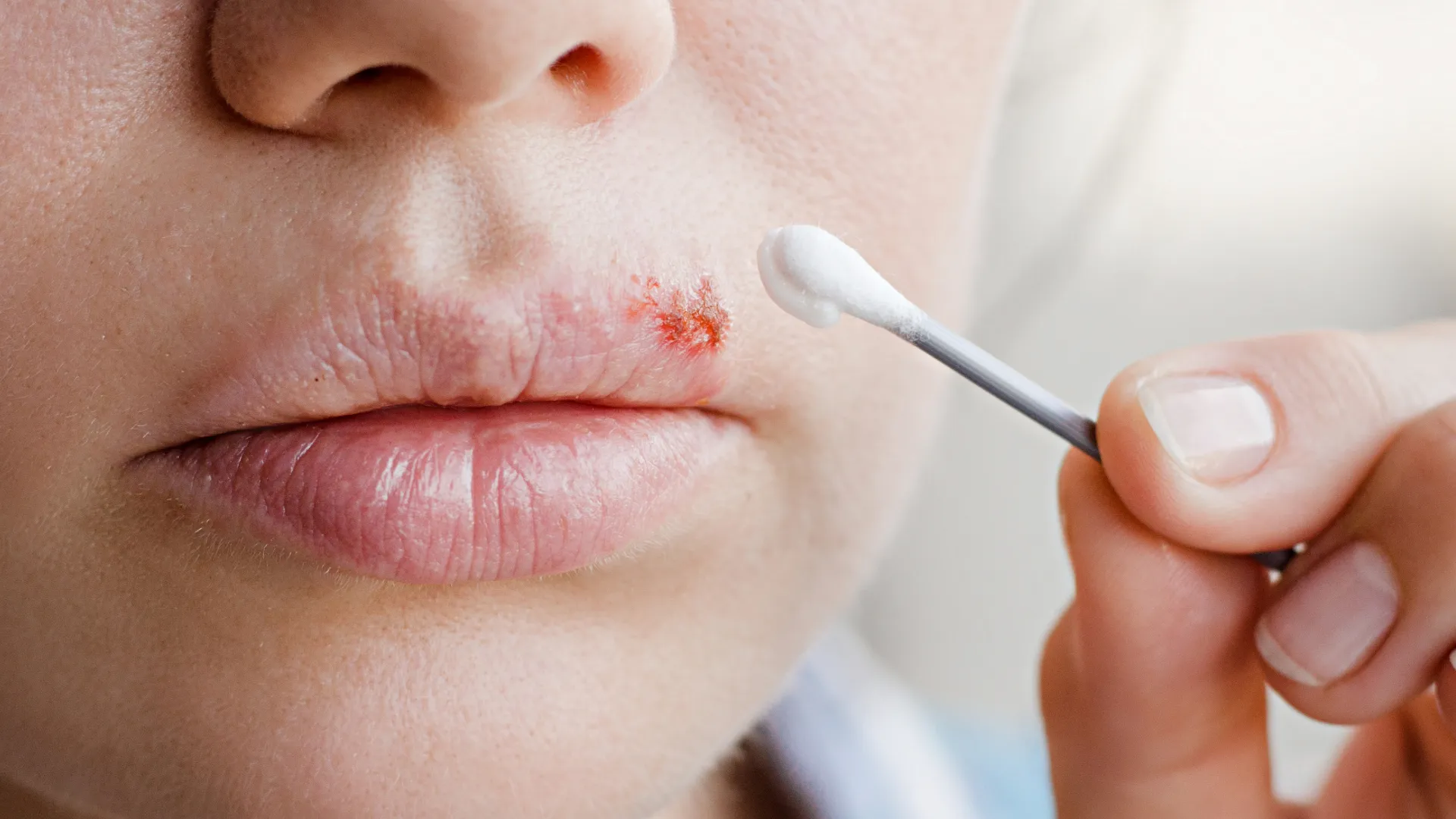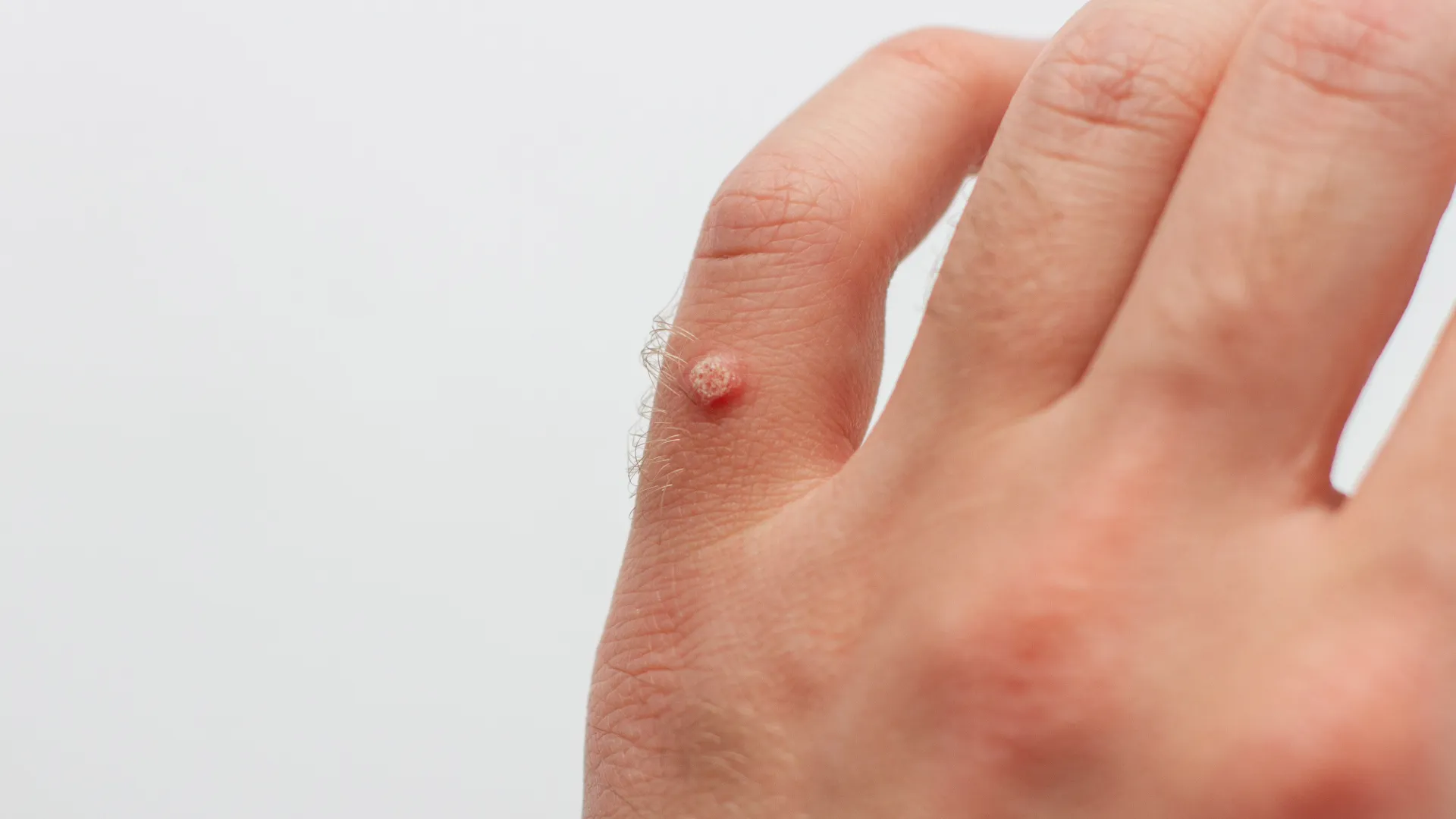Molluscum contagiosum
Molluscum contagiosum is a benign, self-limiting viral skin disease caused by the molluscum contagiosum virus (MCV). It primarily affects the skin and mucous membranes and is easily spread through autoinoculation (when the virus is transferred from one part of the body to another) or through direct contact with infected skin lesions. Transmission can also occur via contaminated objects, such as towels and bedding. When lesions appear in the genital area, sexual contact is the most common mode of transmission.
Incubation period
The incubation period for molluscum contagiosum can vary widely, ranging from 7 days to 6 months.
Clinical presentation
The lesions typically appear in clusters but can also be solitary. They present as hemispherical, skin-colored or pink, pearly nodules that measure between 2 to 5 millimeters in diameter, often featuring a characteristic dimpled center (like a crater). They contain a thick, milky fluid, and while they may feel soft initially, they can become firmer and larger over time.
Common locations
Molluscum contagiosum lesions are primarily found around the genital area, inner thighs, anal region, gluteal area and abdomen.
Treatment
Although the lesions often resolve spontaneously within 2 to 6 months, due to the highly contagious nature of the virus, treatment is recommended to prevent spreading. Various therapeutic options include:
Curettage
The lesions can be scraped off using a surgical curette or forceps.
Cryotherapy
Freezing the lesions with liquid nitrogen. The procedure does not require local anesthesia. Patients can return to their normal activities immediately after treatment.
Electrosurgery
Lesions are destroyed using electrical energy. Usually local anesthesia is applied before the procedure.
CO2 laser therapy
A safe and effective method with high success rates and immediate results.
Topical potassium hydroxide (10%)
This solution can be applied directly to the lesions.
Post-treatment care
Following treatment, it is essential to have systematic follow-up for a specified period to identify and address any new lesions that may have been in the incubation phase and were not yet visible. This comprehensive approach ensures effective eradication of the virus and minimizes the risk of recurrence.
Conclusion
Molluscum contagiosum, while generally benign, can lead to discomfort and potential transmission if left untreated. If you suspect you have this condition, it’s important to consult a dermatologist for an accurate diagnosis and appropriate treatment plan. With the right intervention, you can effectively manage and eliminate the virus, ensuring healthy skin and reducing the risk of further outbreaks.


